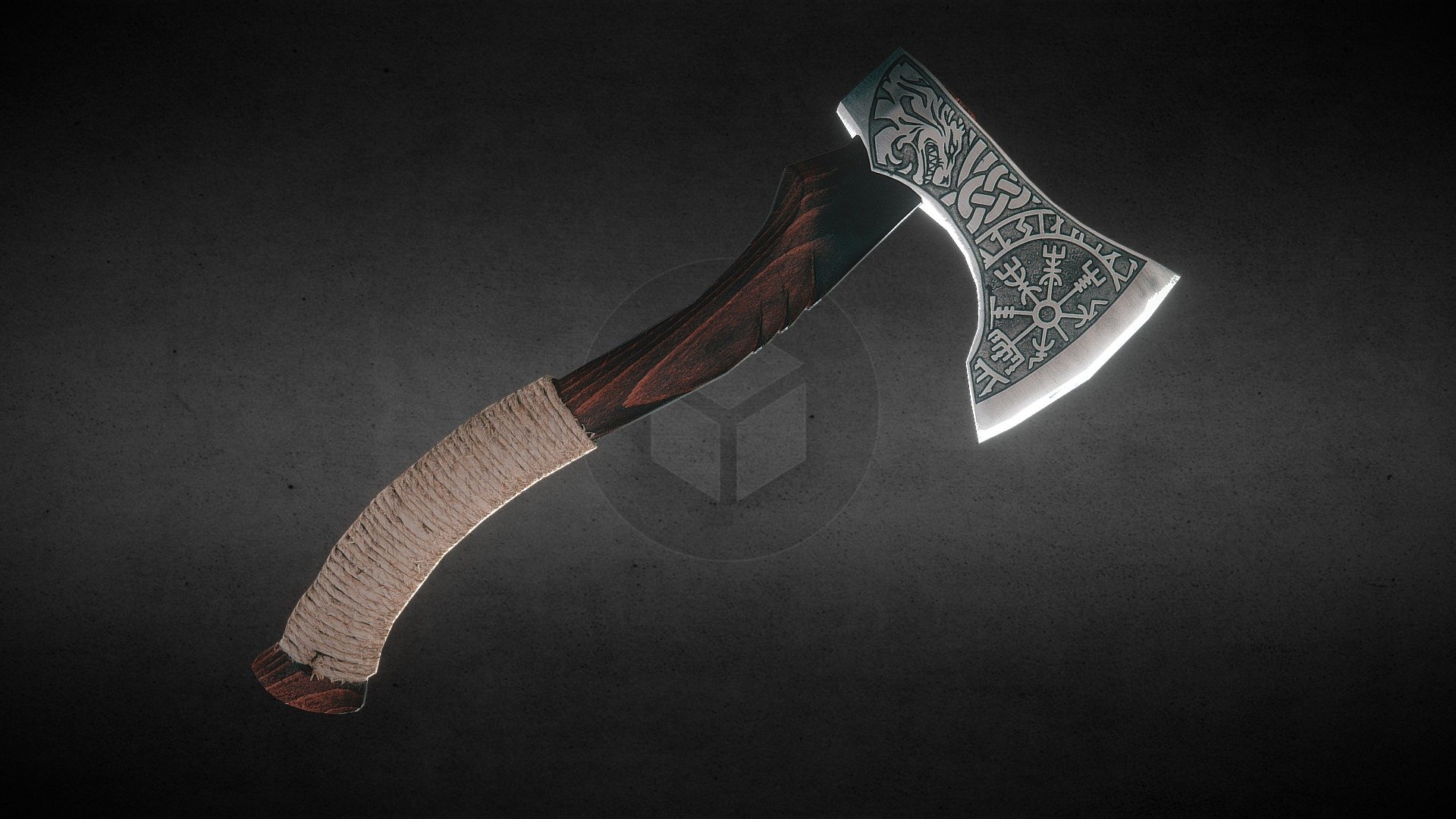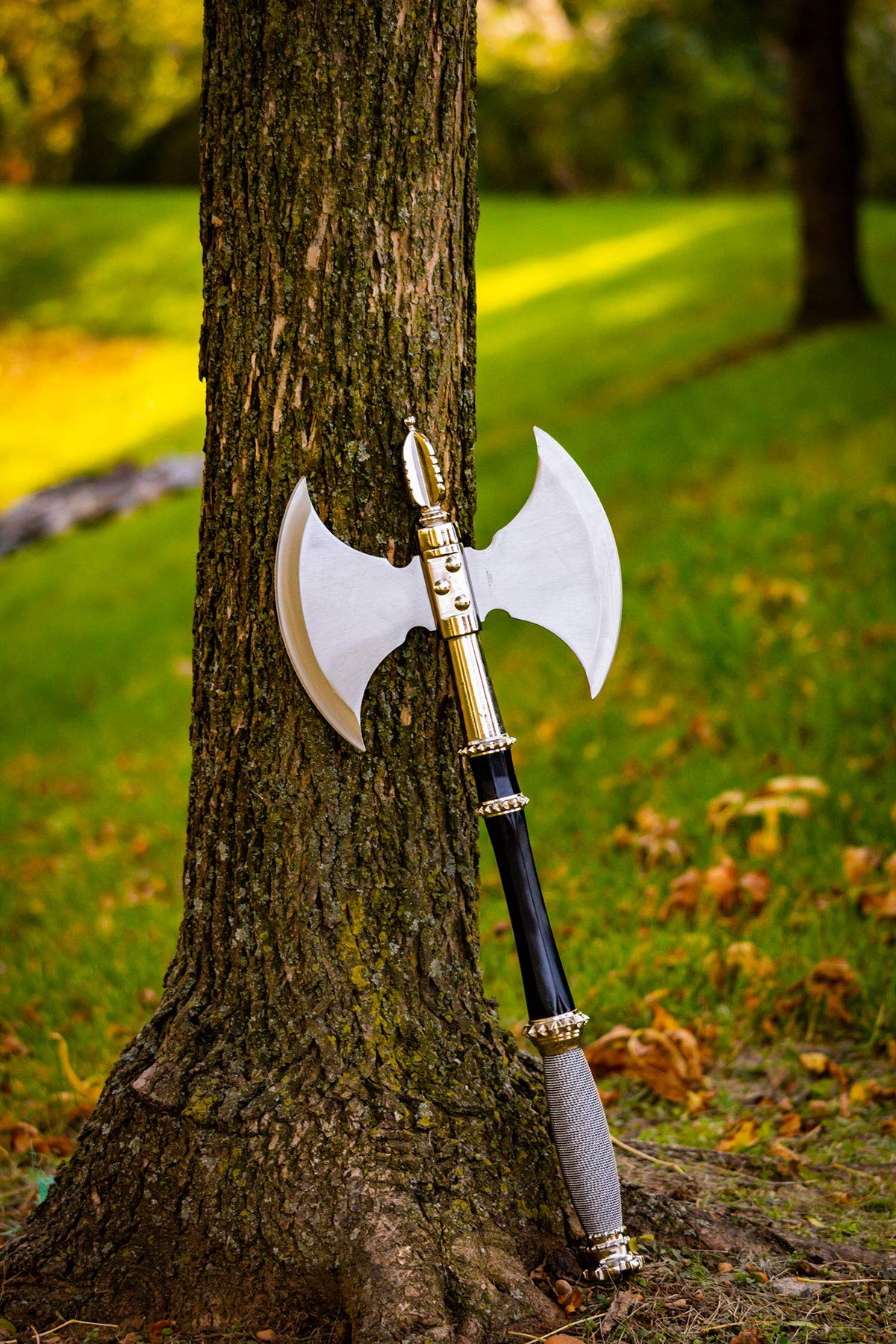Table Of Content
- Forestry companies turned axe making into an industry
- Device “Sniffs” Your Food And Tells You If It’s Safe To Eat
- Best Felling Axes-The Complete 2021 Buyer’s Guide
- Viking axe
- How Thick Should An Axe Handle Be?
- Custom Damascus Steel Viking Black Cobra Axe, Viking Bearded Camping Axe, Best Birthday&Anniversary Gift For Him,
- Building a Forge

The size of these axes varied greatly, though most were double-handed, with handles being as long as 55 inches. The best quality axes have wooden handles, though increasingly big box stores are selling axes with rubber handles. If one blade isn’t enough, then a double bit axe may be a good option. These heavy, symmetrical axes have a second blade where the butt is normally located. A crash axe is usually all metal and has a short handle – it can cut through sheet metal relatively easily.
Forestry companies turned axe making into an industry
Today, battle axes are primarily used for historical reenactments and as decorative pieces, showcasing their rich historical significance. With their distinct design and historical importance, battle axes continue to captivate the imagination of people interested in the Middle Ages and the art of warfare. A pick axe is a versatile tool commonly used for digging, breaking up hard soil, and removing rocks or roots. It consists of a long handle with a pointed pick on one end and a flat blade on the other. The pick end is designed for breaking up hard surfaces, while the blade end can be used for chopping or splitting wood. Pick axes are commonly used in construction, landscaping, and mining industries.
Device “Sniffs” Your Food And Tells You If It’s Safe To Eat
Axes are an important tool that humankind has relied on for centuries. Constructed of two main components, a handle and an axe head, today, there are countless styles of axes to help tackle a wide variety of tasks. A shingling hatchet or roofing axe is a small, straight-handled axe used by carpenters and builders. Its main features are that the poll is hardened to work as a hammer, and many models have a notch at the bottom of the axehead to use as a nail puller.
Best Felling Axes-The Complete 2021 Buyer’s Guide
Testing the efficiency of Bronze Age axes: An interdisciplinary experiment - ScienceDirect.com
Testing the efficiency of Bronze Age axes: An interdisciplinary experiment.
Posted: Thu, 16 Feb 2023 20:50:54 GMT [source]
Although no longer in mainstream production, these axes would traditionally have one sharp blade for felling trees and a blunt second blade for splitting kindling. A carpenter’s axe is a little larger than a hatchet and is used for intricate woodwork projects. It has a very sharp blade, and the high-quality ones have an extremely straight edge for accurate cutting.
Pay attention to the weight and length of the axe, as this will greatly impact comfort and usability. Additionally, consider the type of head that is best suited for your needs, such as a splitting maul for splitting logs or a felling axe for cutting down trees. To make an informed decision, seek advice from experts in the field and read reviews from other users who have experience with different axes.
How Thick Should An Axe Handle Be?
For the last one, she shows them Odysseus’ bow and says that she will marry anyone who can shoot an arrow through the hole in 12 axes in a row. One after the other they try, but they are unable to even pull back the bow. Odysseus, who has just returned disguised as a beggar, asks to have a go and shoots the perfect arrow through the 12 axes. According to Greek mythology Hephaestus, god of blacksmiths, struck Zeus, Father of the Gods, over the head with his double-headed axe. Athena, goddess of wisdom, is said to have leapt from the cloven head of Zeus, fully grown and armed.
If you already have some basic forging and welding knowledge, then you can give this project a shot. If possible, I recommend learning forging and welding from a pro before you attempt to make your own axe. There are probably many local workshops you can take at community colleges.

Double Bit Axe
In fact, some common uses included chopping firewood, building shelter, and even as a tool for butchering animals. The versatility of these axes is truly impressive, and it’s a testament to the ingenuity of the vikings. Instead, they used a variety of materials to keep their axes sharp and ready for battle. One of the most common materials was a type of whetstone made from a soft, fine-grained sandstone.
Zakk Wylde reveals brutal new Mockingbird-inspired Thoraxe guitar - Guitar.com
Zakk Wylde reveals brutal new Mockingbird-inspired Thoraxe guitar.
Posted: Fri, 19 May 2023 07:00:00 GMT [source]
Axe throwing competitions and recreation facilities are rapidly growing in popularity. If you want to take part regularly, you’ll need a set of throwing axes. These are specially made axes that are sturdy and weighted for precision throwing. This T-shaped tool usually has a metal head with a pointed pick on both sides. Today’s pickaxes often have a pick on one side and a chisel on the other, useful for prying apart rocks and earth.
They also sharpened the tips of the blade which allowed them to slash their enemy like a using a knife. Things can get messy and slippery fast when you’re chopping up meat in the rain. The best brands have a specially grooved handle that is non-slip for extra safety. The dagger axe was used in ancient China as a weapon in battle, but today is great to put on display. Those who kept going had to rationalize their operation severely to reduce production costs and survive.
Today, there are various specialized axes available, including hatchets, double-bit axes, and throwing axes, each designed for specific tasks or recreational purposes. The evolution of axes showcases how these versatile tools have adapted and improved over time to meet the needs of different civilizations and cultures. When it comes to the different types of axes, there is a wide variety to choose from based on specific tasks and needs. One such type is the hatchet, which is a small and versatile axe commonly used for splitting wood and camping. Another type is the splitting maul, specifically designed for splitting logs with its heavy head and long handle. For felling trees, the felling axe is ideal, featuring a thin and sharp blade along with a longer handle for leverage.
Stainless steels are much softer than carbon steel, but they also have a higher level of resistance to corrosion due to the added chromium. When you’re at this point, you can remove the axe from the forge, dipping it into a bucket of water to rapidly cool the steel hardening. This will lock the carbon atoms in closely with the iron atoms, making the steel very hard. The edge of the rough axe head must be tempered and hardened which helps to create a balance between being too hard and too soft. Allow edge retention while helping to prevent fracturing and chipping.
So, the impact from the object you hit from this axe may sometimes be uncontrollable and challenging to grip the tool. To harden, you’ll need to heat the edged side of the axe up to eight hundred degrees, allowing it to heat up evenly and slowly, turning and flipping it every few minutes. This is when the carbon will basically dissolve into the ferrite structure. When the ends are closed down onto the slab of steel and borax, place it back into the forge and heat it up again. Take it off the forge and add more borax and start hammering the layers together.
They are lighter and smaller than hatchets and are therefore easier to carry around. They are multifunctional, able to be used for a range of bushcraft activities. Tomahawks are also popular for use in knife throwing competitions, where they have their own category.
Ideally, you’ll want to keep the temperature under 2500 degrees for steel, so it doesn’t start to liquefy. When foraging your axe, you don’t have to use steel, you can use other types of metal, such as ones that begin to melt at a lower temperature. This type of material isn’t going to be nearly as tough as steel though. A tactical axe is primarily used as a chopping device but can include a range of other tools. Screwing, digging, prying, hammering are some ways you may be able to use it. A compass, file, flint or even fishing line are some other popular additions to the tactical axe.







